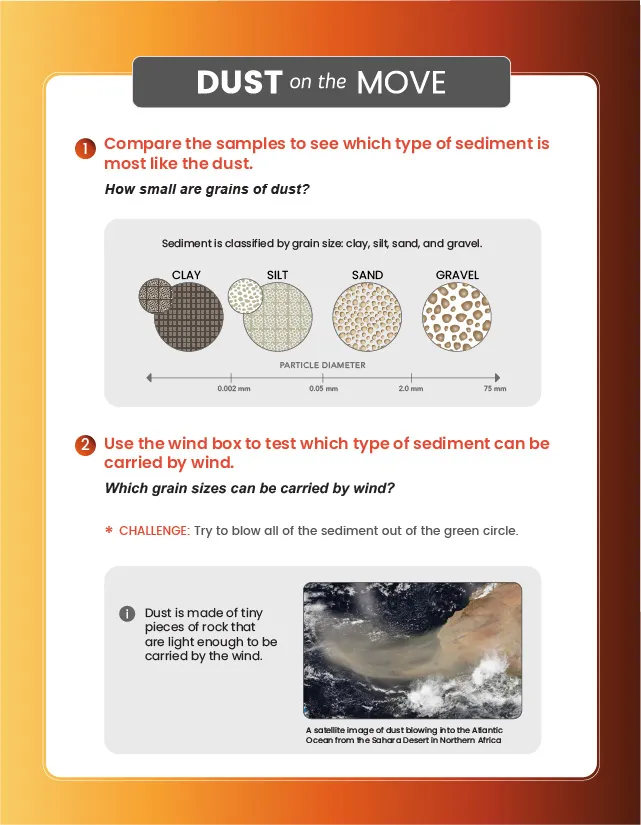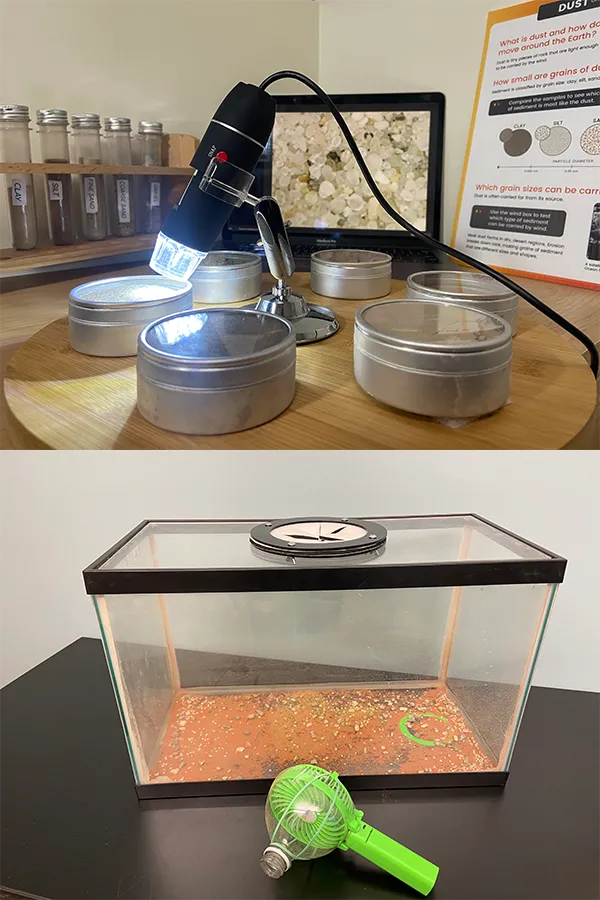Dust on the Move

About the activity
Grains of dust are small enough that the wind can carry them far from their source. Comparing dust samples to other common sediments helps us see just how tiny grains of dust are.
There are two parts to the activity. First, dust, clay, silt, fine and coarse sand, and gravel samples are examined in test tubes and under magnification. Then, there is a wind box where visitors use a handheld fan to test which grain sizes can be transported by wind.
Activity resources
- Print at home files:
- Professional print ready files:
Special note about materials:
If you are interested in building your own copy of the Dust on the Move activity, please note that it uses a few specialized materials that will probably be challenging to obtain. However, with some creativity, you should be able to modify the materials to make the activity work. Below are the materials that are most likely to present challenges.

- Dust samples. These were collected in the field by researchers on the DUST PIRE project. Consider having samples of the other sediments (silt, clay, fine sand, coarse sand, and gravel) and sharing that the dust grain size is larger than clay but smaller than silt. Ask visitors to make a hypothesis about what the grains of dust might look like under the microscope.
- Tank lid. A local plastics company fabricated the specialized lid to allow for reach-in access while keeping the sediments from blowing out. Consider other materials that you could cut to fit snugly on the top of your 10-gallon tank, such as plexiglass or cardboard.